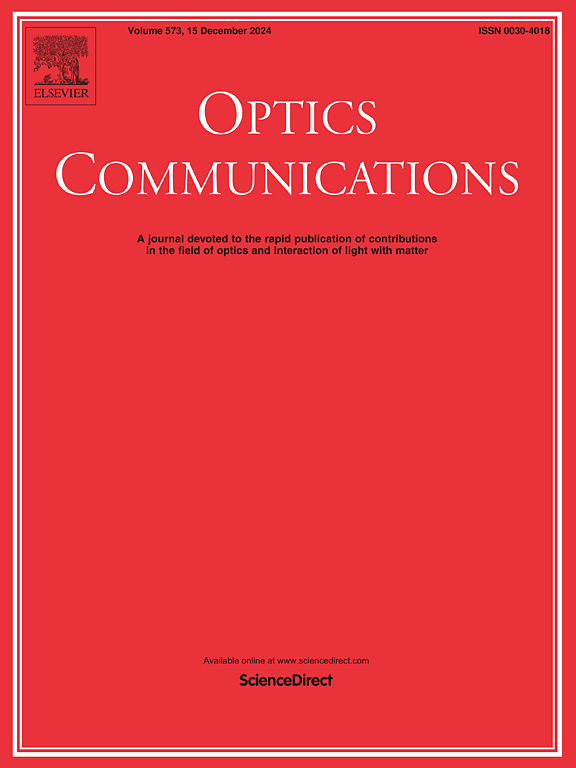Reconfigurable vortex generation based on phase change material
IF 2.2
3区 物理与天体物理
Q2 OPTICS
引用次数: 0
Abstract
The development of reconfigurable optical vortex (OV) generators is of great value because dynamic switching between different orbital angular momentum (OAM) states not only enables high-density data transmission, but also significantly enhances the security of wired and wireless communication networks. However, current dynamic OV generation methods face challenges in terms of alignment conditions, fabrication robustness, device integration and miniaturization, as well as OV generation purity. Here, we theoretically propose a reconfigurable OV generation method by dynamically engineering the photonic band structures via phase change material. OVs are generated by exploiting the winding topology properties of momentum-space polarization distributions around bound states in the continuum (BICs). By switching between different states of phase change materials, the interaction between the target BIC and the incident light can be flexibly selected to achieve OV with tunable OAM. In this work, the geometric phase gradient is generated in momentum space, thereby eliminating the need of beam alignment in real space. The purity of generated OVs approaches nearly 100 % in theory and exhibits robustness against fabrication errors to a certain extent. Using low-loss phase change materials to control the topological properties of the system offers new opportunities for tunable optical devices, on-chip optical communications and other applications.
求助全文
约1分钟内获得全文
求助全文
来源期刊

Optics Communications
物理-光学
CiteScore
5.10
自引率
8.30%
发文量
681
审稿时长
38 days
期刊介绍:
Optics Communications invites original and timely contributions containing new results in various fields of optics and photonics. The journal considers theoretical and experimental research in areas ranging from the fundamental properties of light to technological applications. Topics covered include classical and quantum optics, optical physics and light-matter interactions, lasers, imaging, guided-wave optics and optical information processing. Manuscripts should offer clear evidence of novelty and significance. Papers concentrating on mathematical and computational issues, with limited connection to optics, are not suitable for publication in the Journal. Similarly, small technical advances, or papers concerned only with engineering applications or issues of materials science fall outside the journal scope.
 求助内容:
求助内容: 应助结果提醒方式:
应助结果提醒方式:


